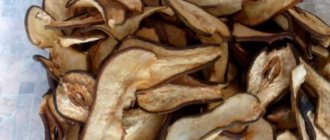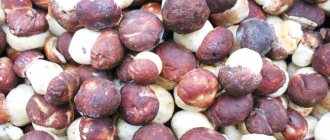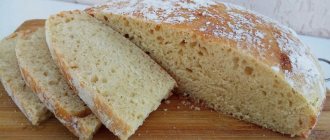The shelf life of baked goods is short. So, how to store bread so that it does not go stale or moldy?
Rye is stored for 36 hours, wheat - for a day. Small items up to 200 grams – 16 hours. To preserve the nutritional and taste properties of baked goods, it is recommended to maintain an air humidity of 75% and a temperature of 18-25 C.
Bread that goes on sale is accompanied by documents indicating the date and hour of baking. During storage, processes occur in flour products that deteriorate the quality and taste. The product loses moisture and dries out.
Where to store bread? Traditional way - bread box
It is convenient to keep baked goods in a bread box. It is desirable that it consist of two sections. Bread containers are made from different materials: ceramics, plastic, metal, wood.
The experts' opinion is clear. The best material for making bread bins is considered to be wood of the highest quality.
To increase the freshness of the loaves, place it in a dry, bright place, further from the sink.
Rules for caring for a wooden container:
- Once a week, wipe surfaces with a weak solution of vinegar;
- Wash the product in warm water 2 times a week and dry thoroughly;
- Ventilate the kitchen regularly.
Following these tips will help avoid mold and keep the product fresh and appetizing.
Why does bread mold in the bread bin?
Causes of mold:
- Poor quality flour: violation of storage standards, contamination with harmful bacteria. In a warm and humid kitchen, mold grows instantly.
- Dirty bread bin: not washed after spoiled product. Not completely dried.
- Loaves of a certain manufacturer: buy at another bakery.
- The sanitary standards for baking and the contents of the composition were violated.
Frequent airing of the kitchen and lemon peels placed in a container overnight will help keep the bread fresh.
Convenient storage in fabric and polyethylene
Bread and bakery products are stored in different ways. Some housewives prefer fabric bags, others prefer plastic bags.
In addition to ordinary bags, pieces of flax or canvas are used. Wrap it up and put it in the closet. This keeps the product fresh and fluffy for 3-4 days. Then it becomes stale, but does not lose its taste.
It is recommended to wash the fabric or storage bag 2-3 times a month. Use unscented soap and do not use powders with fragrances. Additives in detergents affect the quality of the product.
Plastic bags keep bread loaves fresh for 5 days. It is important that the loaf is clean and dry. A polyethylene bag retains moisture and prevents the loaf from becoming stale and dry out.
But at the same time, the material increases the accumulation of condensation. High humidity creates an environment inside the bag that is favorable for the growth of bacteria.
That's why the bag needs holes. You can pierce the holes with a fork or knife.
The factory packaging initially contains round holes. Air enters and prevents the appearance of wet spots and mold.
Refrigerated storage conditions
The bread must “breathe”. Therefore, look at the packaging material. Natural fabric is best. You can use a paper bag. It does not accumulate odors and maintains natural humidity. Foil is more suitable for freezers.
Important!
Don't forget about ventilation! When choosing packaging, air access is necessary.
The packaging should be closed, but not airtight, as a lot of moisture will appear. The flour product will begin to get soggy and spoil. A fungus will appear.
Another common storage method is a plastic bag. In it, bread can remain more or less fresh for up to five days. But you need to follow certain rules.
How to properly store bread in plastic:
- make holes on it with scissors or a hole punch;
- do not use the package a second time;
- it must always remain dry and clean;
- place, wrapping relatively tightly.
There is no need to keep the bread on the door or up on the top shelf. It's better to highlight a specific place below. There will be less chance of foreign odors being absorbed. White baked goods are best stored on the bottom shelf. To prevent them from becoming moldy, place them separately from brown bread and foods with odors.
Secrets of long-term storage
– Bread will be tasty and healthy for a long time if you follow these tips:
– Place peeled potatoes or apple slices in a container. These products absorb excess moisture and prevent the loaves from hardening.
– A hot, freshly baked loaf should be cooled. Leave for 3 hours, pack.
– Store the rolls in closed containers and pans in additional packaging.
– The old method recommends: first divide the loaf into two parts. Cut the required number of pieces from the center. Remove the rest by pressing with the cuts.
– Keep the product in bags containing 3 layers: fabric inside and outside, plastic between them. the product will remain soft for 3-4 days.
– Cut and sew the bags. Soak in saline solution. Dry without rinsing with water.
To choose the right storage method, try them all and settle on the one that suits you.
How to revive stale bread?
There are several effective ways to revive dried bread:
- Cut the loaf and place it in the microwave with a cup of water for a few minutes, heating it at maximum temperature.
- Place the loaf in a sieve or colander, cover tightly with a lid and hold over a pan of boiling water for several minutes.
- Moisten the bread with warm water and place in the preheated oven.
These methods will help restore the freshness and taste of baked goods.
Is it possible to store baked goods in the refrigerator: salvation or mistake?
According to housewives, flour products remain fresh in the refrigerator for 6-7 days.
To do this, it is advisable to follow the rules:
1. Remember that flour absorbs the odors of other foods. Therefore, it is recommended to put baked goods in the refrigerator in a container or bag.
2. It is forbidden to store bread that has not cooled down in the refrigerator compartment. Moisture collects on the walls of the package and the bun spoils.
3. Bread products that are beginning to mold should not be placed in the refrigerator. A lower temperature will not prevent the process. In addition, the pathogenic fungus will spread to the rest of the food.
Low temperature is considered a negative factor of this method. Chilled bread seems tasteless and loses its smell. The bun has to be reheated before eating. Many people don’t like the fact that it dries and hardens because the moisture evaporates faster than at the temperature in the room. And they choose a freezer.
Where can you store baked goods in the kitchen?
Where do modern housewives store bread in the kitchen so that it does not go stale for a long time?
- at room temperature;
- in a refrigerator;
- in the freezer.
Each of these methods has its own characteristics and nuances that should be taken into account so as not to speed up the spoilage of the baked goods.
How and for how long to store fresh bread at room temperature so that it does not go stale
How long can fresh bread be stored? The shelf life at room temperature is short and depends on the type of flour from which the product is made:
- bakery products made from rye flour remain suitable for consumption for 3 days;
- wheat bread for no more than 2 days.
To keep baked goods soft and fresh, you need to protect them from air and moisture.
Option 1: bread box
The most common way is to store bread in bread bins, which securely seal the product from external influences. Bread bins are made from different materials, each of which has a number of disadvantages and advantages:
- Wooden bread bins.
Allows you to preserve baked goods for 2-3 days. Preference should be given to bread bins made of birch bark or juniper; these types of wood are natural antiseptics and prevent mold.
Unfortunately, these materials are quite expensive, so they are rarely found in everyday life.
The disadvantage of wooden bread bins is the porosity of the material and its ability to absorb odors and moisture. In addition, wood is an excellent breeding ground for bacteria.
- Bread bins made of metal and plastic.
Affordable, easy to care for and resistant to odors and microorganisms. Even if mold appears on bread, such a bread bin can simply be washed. Metal and plastic bread bins are the most in demand today.
- Ceramic bread bins.
Allows you to keep bread fresh for up to a week. Clay absorbs excess moisture and, if necessary, releases it, which creates optimal conditions for storing baked goods. Their disadvantage is fragility, significant weight and fairly high cost.
To keep the bread fresh for several days in the bread bin, you must follow these rules:
- place the product in a clean, dry container;
- regularly wash the bread bin using vinegar;
- remove crumbs in a timely manner;
- close the bread bin tightly;
- place baked goods on a wooden board or plastic rack to allow air circulation4
- isolate different types of bread from each other.
Place the bread box in a dry place with a constant low temperature.
In the absence of a bread bin, any container with a tight-fitting lid (bucket, pan) will do. You can place not only store-bought products in them, but also homemade baked goods, after cooling them first.
Helpful Tips:
- a piece of apple or raw potato will protect the product from drying out;
- a small amount of salt (in a glass or canvas bag), on the contrary, will absorb excess moisture and prevent mold from occurring.
Life hack for housewives: storing homemade baked goods in a container with a fresh apple will allow the products to remain soft longer and preserve the aroma.
Option 2: in packages
Many manufacturers place baked goods in individual packaging (most often made of polyethylene).
You can store bread in plastic bags, but it is important to follow a few rules:
- Make several holes on the packaging with a hole punch, an awl or a regular needle. The vacuum prevents air circulation and promotes the rapid appearance of fungi.
- Do not use a plastic bag twice. Bread crumbs are an excellent breeding ground for bacteria that will penetrate the fresh product.
If these rules are followed, the bread will remain soft and fragrant for 2 days.
Instead of a plastic bag, you can use a paper bag or wrap the bread in baking paper or parchment. This packaging allows baked goods to breathe; shelf life can be increased to 3 days.
Option 3: fabric
Our ancestors stored bread by wrapping it in canvas or linen, which made it possible to preserve the crispy crust and airy crumb for 5-7 days.
This method is often used today by wrapping the bread in kitchen towels. Natural fabric does not interfere with air circulation and protects against drying out. A prerequisite is that the fabric must be clean, dense and without a bright pattern (white cotton or linen is best).
For ease of use, you can sew special bags or purchase ready-made ones in the store. They consist of 2 layers of fabric, between which there is perforated polyethylene.
Storing bread in the refrigerator: salvation or mistake?
In some families, baked goods are eaten in small quantities, so to preserve the taste and quality of the bread for a long time, it is placed in the refrigerator.
This method allows you to protect the bread from drying out and also prevents it from becoming moldy for up to 2 weeks, however, it negatively affects the physical properties and taste of the products. It has been proven that temperatures in the range of zero to 10 °C are least suitable for storing any type of baked goods. Under such conditions, the process of hardening accelerates, the crust thickens, and the taste deteriorates significantly.
How to properly store bread in the freezer
At a temperature of 0°C, the hardening processes slow down. When the thermometer drops to minus 10, they stop altogether. Placing bread in the freezer will keep it for several months.
An important condition is that the baked goods must be hermetically packaged to avoid moisture evaporation. To do this, the bread needs to be wrapped in cling film or foil.
To defrost, place the bread in a hot oven or microwave.
Please note that thawed baked goods become stale after just a few hours, so it is recommended to freeze them in portions.
Recommendations on how to freeze bread in the freezer can be found in the video.
Drying crackers
You can save excess bread from spoilage in a fairly simple way:
- cut into pieces;
- spread in one layer on a baking sheet;
- Place in an oven preheated to 100°C for 40-50 minutes.
The crackers obtained in this way can be consumed the same day with tea or stored in a linen bag or paper box in a dry place.
How to properly store bread in the freezer
Sometimes it becomes necessary to keep the loaves edible for 2 weeks or more. This is possible using a freezer.
A product frozen according to instructions and properly thawed is no different from a freshly baked product. Retains moisture, remains appetizing and soft.
Cut the bun into portions. Place in paper and plastic bag. Remove the air from the packaging and place in the freezer. Set the temperature to 20 C.
Stored at temperatures up to – 18 C for 3-4 months.
Thaw it indoors before eating. It will take 2 hours. Do not freeze the loaf the second time!
If you follow the storage rules, the bread will remain fresh and tasty.
Drying crackers
Crackers are one of the ways to preserve baked goods. The dried pieces are thrown into soup or borscht. If necessary, reheat by steaming.
Drying crackers at home is easy. An accessible method is oven drying:
- cut the bun into pieces;
- spread on a sheet in one layer;
- place in the oven, heated to 120-130 C;
- leave for 10 minutes;
- turn the pieces over and cook until browned, 8 minutes.
The preparation time for crackers is half an hour. For uniform drying, it is advisable to cut pieces of the same size.
How to restore freshness to bread
This can only be discussed for stale bread without signs of mold.
The easiest way is to wrap stale bread in a wet cloth and place it in a preheated oven or microwave. The bread product will not become fresher, but it will become softer and easier to cut. In a multicooker, you can use the steam cooking mode to achieve this effect. The softened bread should be consumed immediately after the procedure, since the moisture will evaporate quickly enough and the bread will become even staleer than it was.
Stale bread made from wheat flour is not worth restoring to freshness. It is rational to grate breadcrumbs from the loaf, and buy fresh bread for consumption.
Black and white - together or apart?
Grey, black, white: each species has its own individual microflora. And loaves of different types, if placed together, begin to quickly deteriorate.
It is recommended to keep white and black bread apart or pack it in separate bags.
The reasons for the impossibility of storing different varieties together is that white and dark have different amounts of water in the mass of flour. Black contains 80% water, white - about 60%.
In addition, the rich smell of black is absorbed by white loaves.
If wet and moldy spots appear on the pieces, then they are not suitable for food!
Features and general rules for storing bread at home
Almost immediately after baking baked goods, 2 processes begin:
- Callousness.
Any flour contains gluten or starch, which are in a swollen (amorphous) state in a freshly baked product. A few hours after baking, the starch begins to crystallize. The crust constantly loses its shine, and the crumb hardens and crumbles.
- Drying out.
The evaporation of moisture from a baked product, causing it to become tough and lose weight. This happens most actively in the first hours after baking, when the bread is still hot.
If stored improperly, the crust becomes moldy, and bacteria multiply in the chaff, actively releasing toxins.
These processes are irreversible, but they can be slowed down if you follow a few rules:
- Store different varieties separately from each other. The point is not only that the proximity of products made from rye and wheat flour negatively affects the taste of white bread. This accelerates staling, leads to mixing of different types of bread yeast and accelerates the appearance of mold.
- A simple rule will help slow down the hardening: before you remove a hot baked product for storage, you should completely cool it at room temperature, placing it on a wire rack and hiding it from drafts.
- The bread will remain soft longer if you cut the loaf (loaf) in half, cut off the required amount and tightly connect the two parts. This will protect the product from premature drying of the crumb.
Perhaps the simplest rule, which will also save your budget, is not to buy bread for future use. Bakery products can be purchased in almost every store, so there is no point in purchasing them in excess. Buy daily the amount that your family consumes per day.
What does SanPin say about the storage of bakery products?
The Russian Federation has established the following sanitary rules and standards for the storage of bread products:
Bread is stored in suitable rooms: light, clean, ventilated and dry. Isolated from heating devices and cold air. Mold and wet stains are not allowed on the walls.
Products are stored in open or closed containers placed on mobile racks. Shelves, trays, racks are made from materials approved by the Ministry of Health: metal, wood, plastic.
It is prohibited to store goods that differ in composition and smell in warehouses for flour products.
For shelf life, the loaves are packaged.
Shelf life of bread products:
- wheat – 3 days in packaging, 1 day without packaging;
- rye – 5 days;
- Borodinsky - 36 hours;
- wheat-rye – 4 days;
- wheat loaf – 1-3 days.
Since 2021, factory packaging for baked goods contains sorbic acid. A natural preservative protects against mold and increases the time of use.
How to recognize a delay?
To avoid buying spoiled bread, pay attention to the presentation:
- the bun should be smooth and without dents;
- take its original shape after squeezing;
- have a bready smell;
- be free of traces of mold and dark deposits.
The presence of one of the listed signs indicates that the product is expired. You can't buy or eat this.










